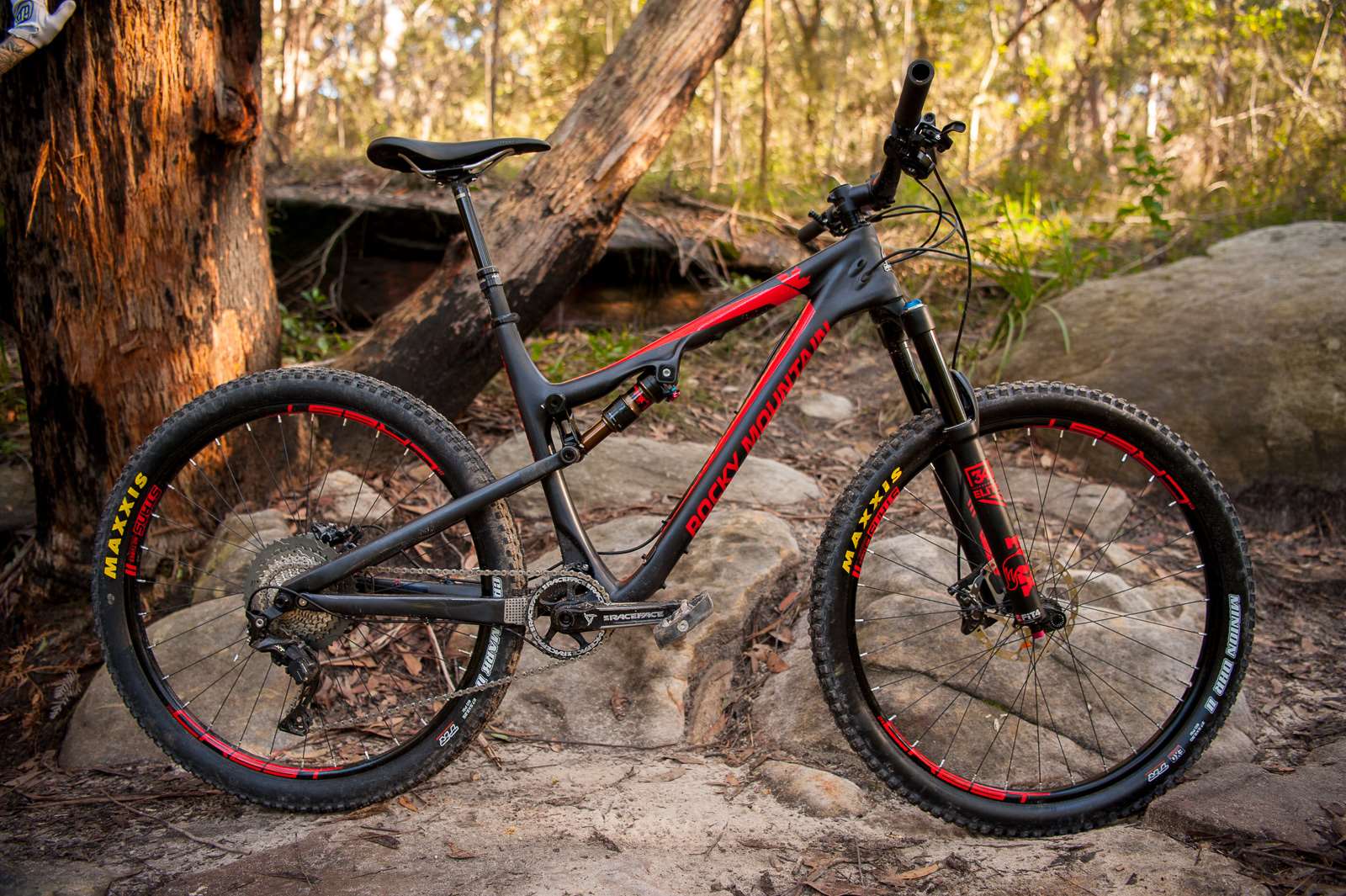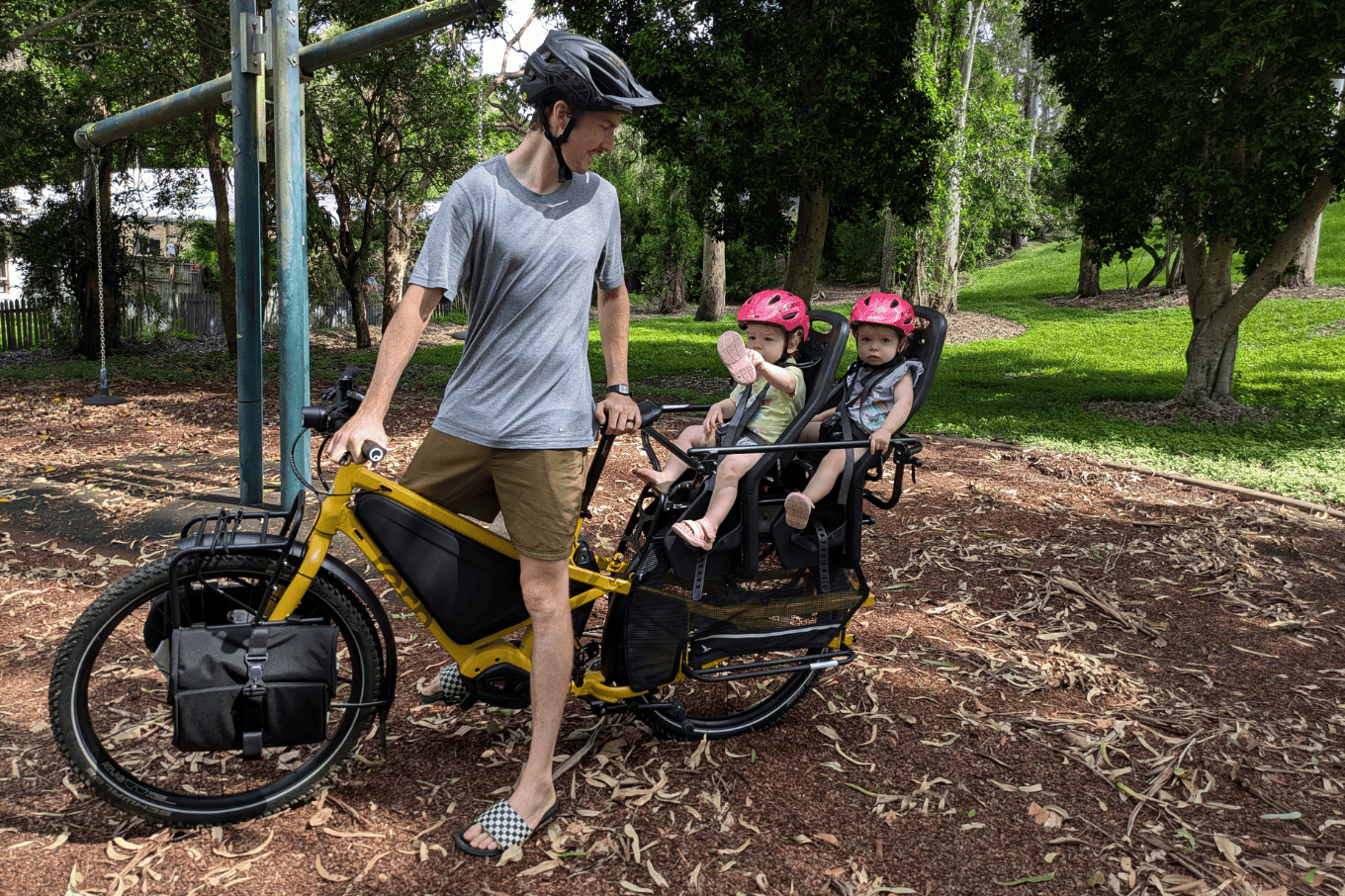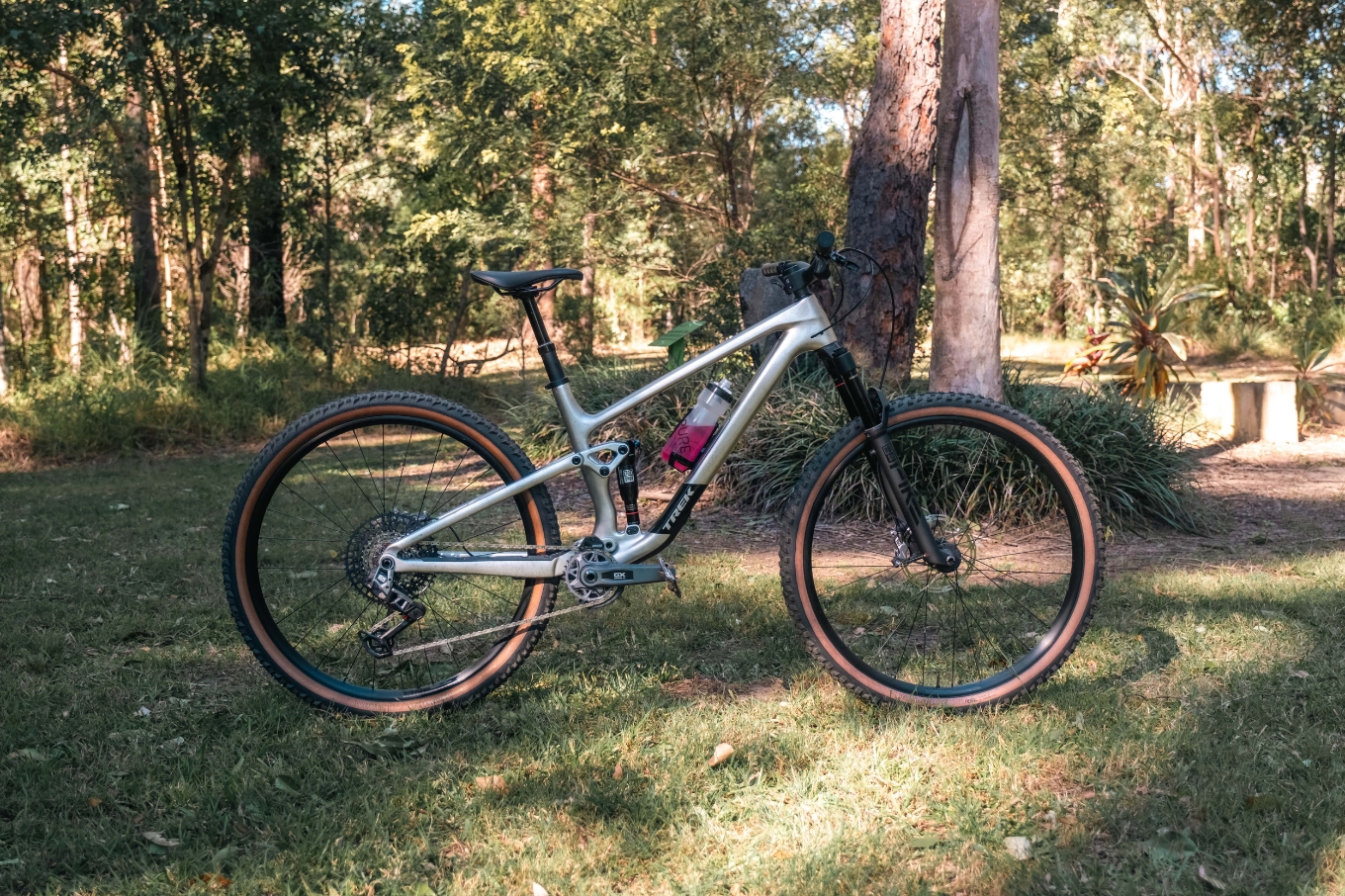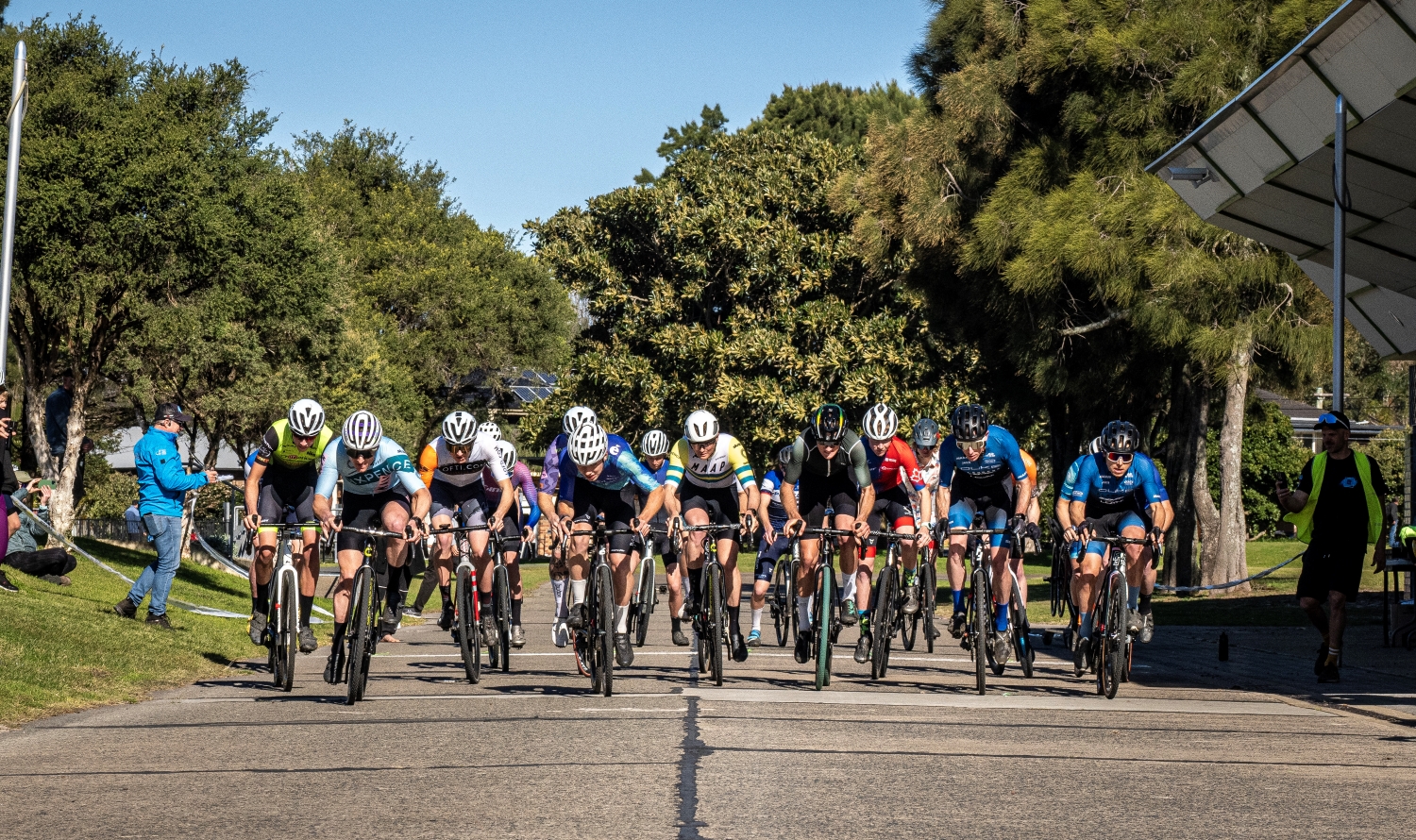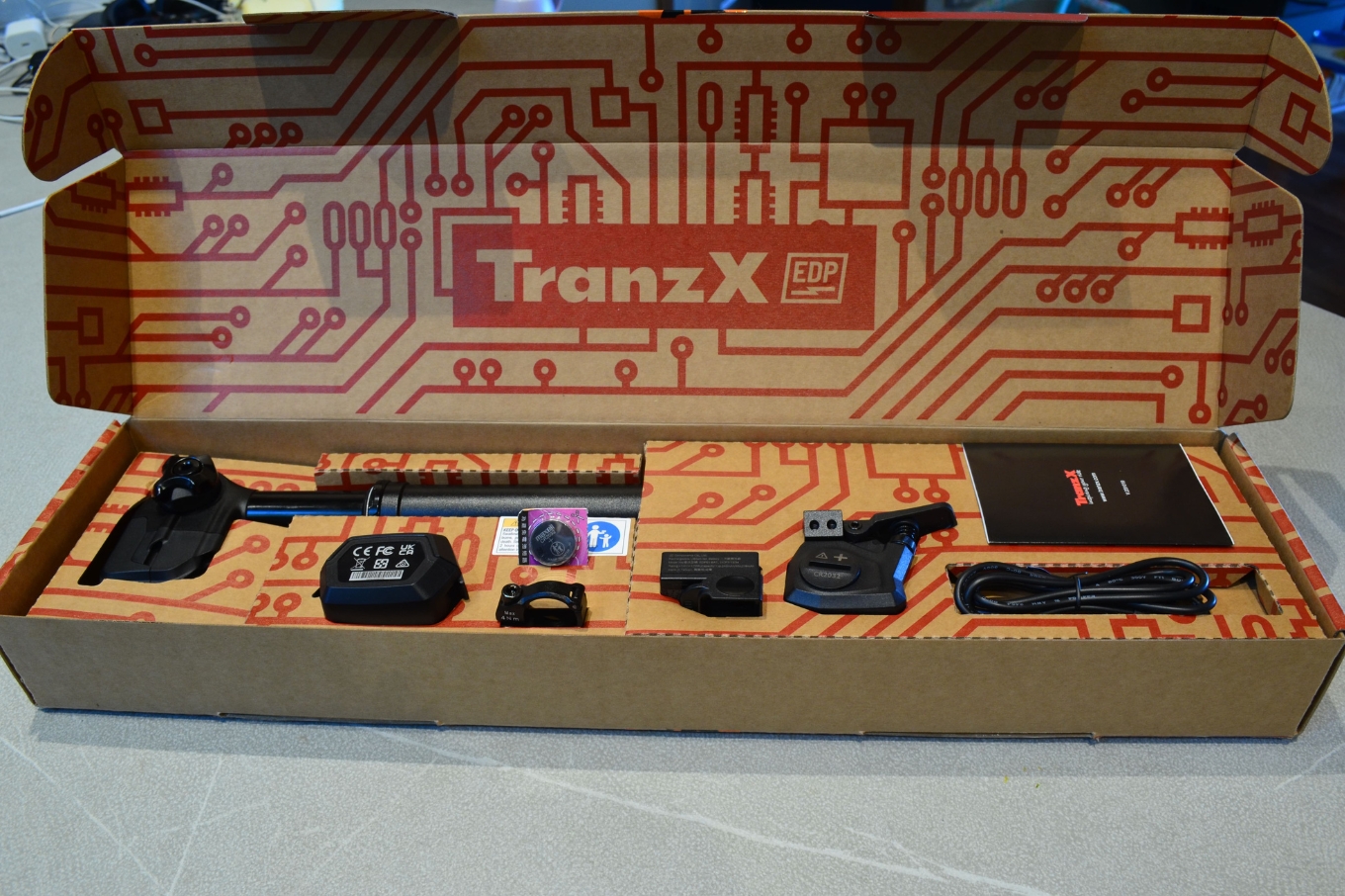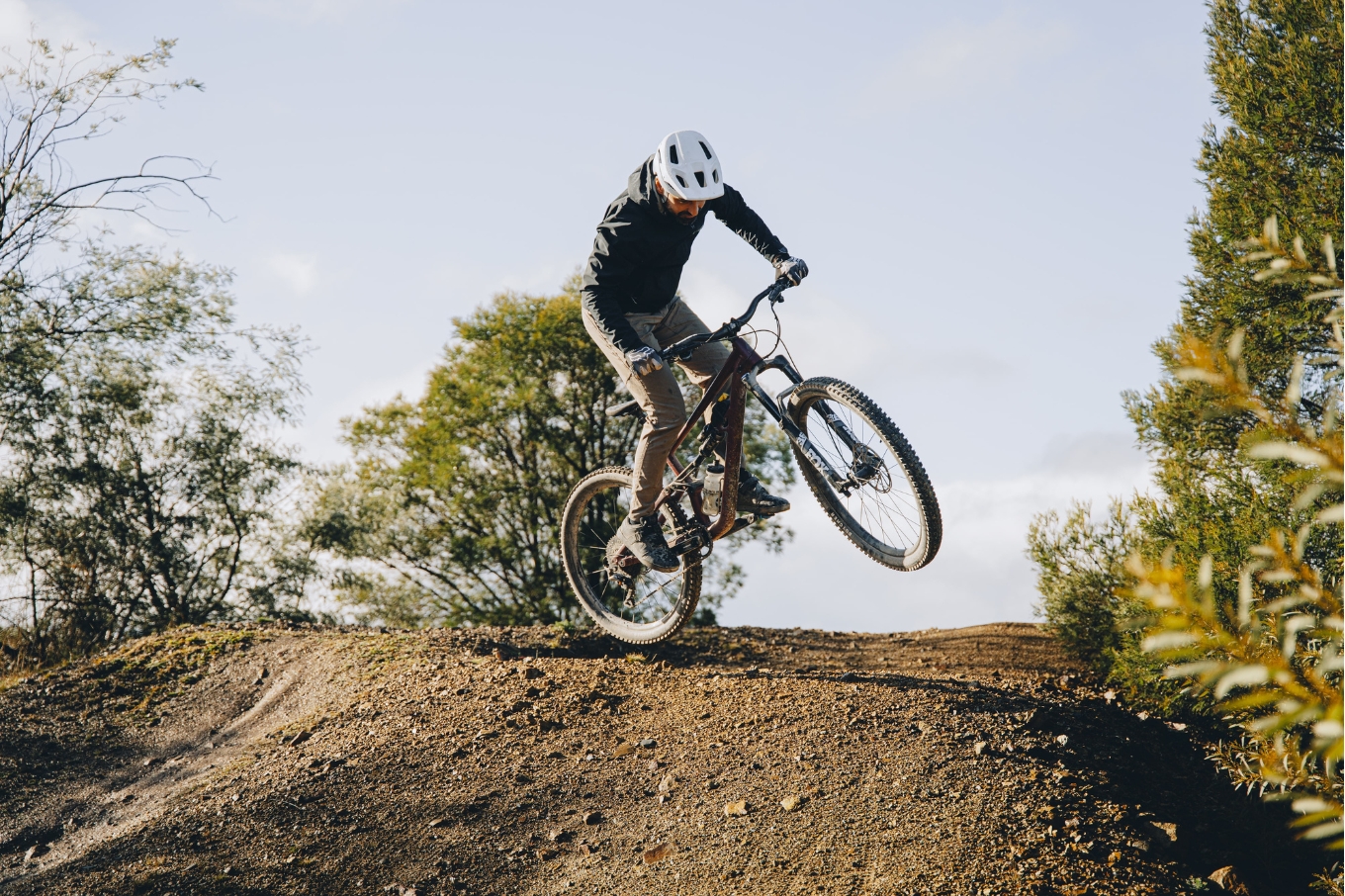TESTED: Rocky Mountain Thunderbolt 770 MSL
Seasoned tester Lachlan McKillop puts the Thunderbolt 770 MSL through it's paces.
Words: Lachlan McKillop Photos: Robert Conroy
Rocky Mountain has really caught my eye of late. The brand has been around for 30 years and always had a high pedigree. After testing the Maiden World Cup downhill bike 2 issues ago I was introduced to how well this Canadian brand thinks about their bikes, especially with who and how they are going to be ridden. Rocky Mountain introduced the 120mm travel Thunderbolt platform in late 2014, and AMB first caught a look at them at Eurobike that year.
Rocky Mountain focus heavily on the construction of their frames, and the ride they give via their geometry. The RIDE-9 system is a really innovative feature on Thunderbolt to give 9 different geometry, or handling settings.

Initial Impressions
Rocky Mountain’s Maiden World Cup downhill bike surpassed my expectations, so being sent an early release of the Thunderbolt was cool. The bike is a full 2017 model and the group set features some key parts that have only recently been released. Parts like the revamped RockShox Reverb (or Refurb as some call it), the Shimano XT 11-46 cassette, Shimano Boost XT hubs and Stan’s NoTubes Crest Mk3 rims.
The bike is fitted with parts that you might more commonly see on a burlier 140mm+ travel bike, but then it is also a representation of how manufacturers are starting to spec bikes to suit how we’re riding them. The 130mm Fork 34 Performance forks, 35mm handlebars and stem, Boost spacing and RockShox Reverb seat-post all shout ‘very capable trail bike’. I couldn’t help but think that this was going to be a pretty unique ride. Standing back and looking at the Thunderbolt it was apparent that this was a hard-hitting trail bike, something the gravity orientated and XC riders could both enjoy. A true trail bike that had grown up on the Shore.
It was Friday evening when I built the Thunderbolt, I work at a shop, it had been a long day but the bike went together nicely. I stood back after the bike was built, cracked a beer and just thought how easy on the eyes this bike was. The lines of the frame are super clean and uncluttered by cables. It is beautiful, smart and for the better part future-proof. All of the parts are colour matched perfectly which shows care with a build, and the precise spec shows that it was obviously designed by people who actually ride. The bike was really light, even completely padded when pulled out of the box. At the time I was a little worried this bike was going got be bordering on being more of a XC bike than a trail style bike, and I wasn’t sure if I was going to be donning the lycra or wearing my baggies.
Numbers wise the bike seemed more than promising, with adjustment to suit the needs of a range of riders via RIDE-9 (I always love adjustable geometry, it’s the geek in me but being able to test what is better is rad). The head angle and chain stays at 422mm are something closer to my Enduro bike than a 120mm travel trail bike. The choice of 27.5” wheels was really cool, with a lot of shorter travel bikes going back to big wheels it was going to be fun to have smaller wheels to play on.
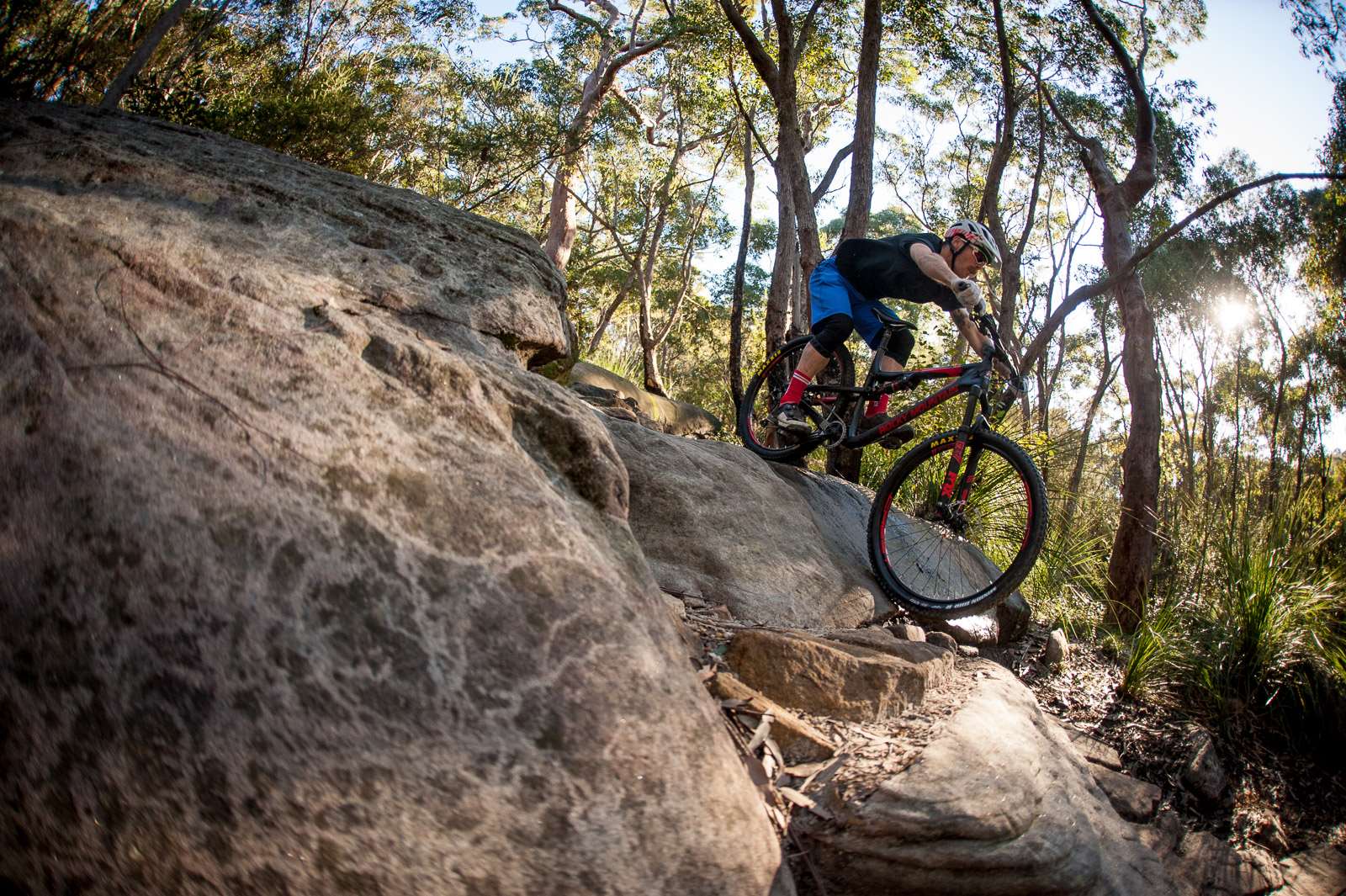
On the trail
On my first ride on the Thunderbolt I noticed two things straight away, the weight and the low standover height (part of this is a low head tube). With the first trails I rode having some nasty pinch climbs to get into the track, the climbing ability of the Thunderbolt was pretty obvious. Low weight allowed it to climb nicely whilst the low front end kept the weight forward on the bike so that the front wheel isn’t lifting. It felt like I could climb on this bike for hours. The low front end may take riders some time to get used to, and if you are used to slamming the front end of your bike straight away I’d think again. It’s still not going to climb like a cross-country specific bike, but it is pretty damn close.
Shimano’s XT 11-46 cassette looks like a piece of art, and is in-fact larger than the rotor. Shimano’s latest wide range cassette has been developed with the shifting ramps at well thought out points on the cassette which allows shifting under load to be as smooth as possible.Personally I am not the biggest fan of the shifters (the thumb/fore finger shifters I find a bit ‘spongey’) the shifting was smooth throughout all of my rides and matched with the I-Spec II mount to the brakes everything fell in the right place. The only thing that seemed a little out of place was the RockShox Reverb lever, they just match up with SRAM far better.
To keep things consistent I try to keep a fairly similar sag on my test bikes, at least for the start. Usually I use 25% on the forks and 30% on the rear, and the Thunderbolt was no different. As I descended on the bike for the first time I was a little apprehensive, the bike was damn light and I didn’t want to put it into a situation it couldn’t cope with. With the first rock garden down I was pretty shocked how the bike stayed on line so well. Fox’s new generation of their 34 fork is stiff and also tends to ramp up a lot more and not dive like some of its predecessors thanks to the FIT4 cartridge, this stiffness of the chassis matched with the tuning of the fork kept the front wheel on track and did so throughout the whole test. In fact placing the wheels where you wanted them, and keeping them there was made particularly easy with my new favourite standard, Boost. The wider flange hubs create a stiffer front and rear end which really means you can throw the bike around. Stiff wheels and a great tyre choice made moving the bike around damn easy. I had experienced this same feeling on a test last year (Pivot Mach 4 Trail) which ran Boost, but matched with a 29er wheel. The tyres are wrapped around the slightly wider Mk3 Crest giving the Maxxis rubber a slightly wider contact point on the ground too increasing grip on the ride. The tyre choice is quite nice, a DHR front matched with a Crossmark II rear. Personally I’d run something with a little more side knobs on the rear but this is something easily changed and is totally personal.
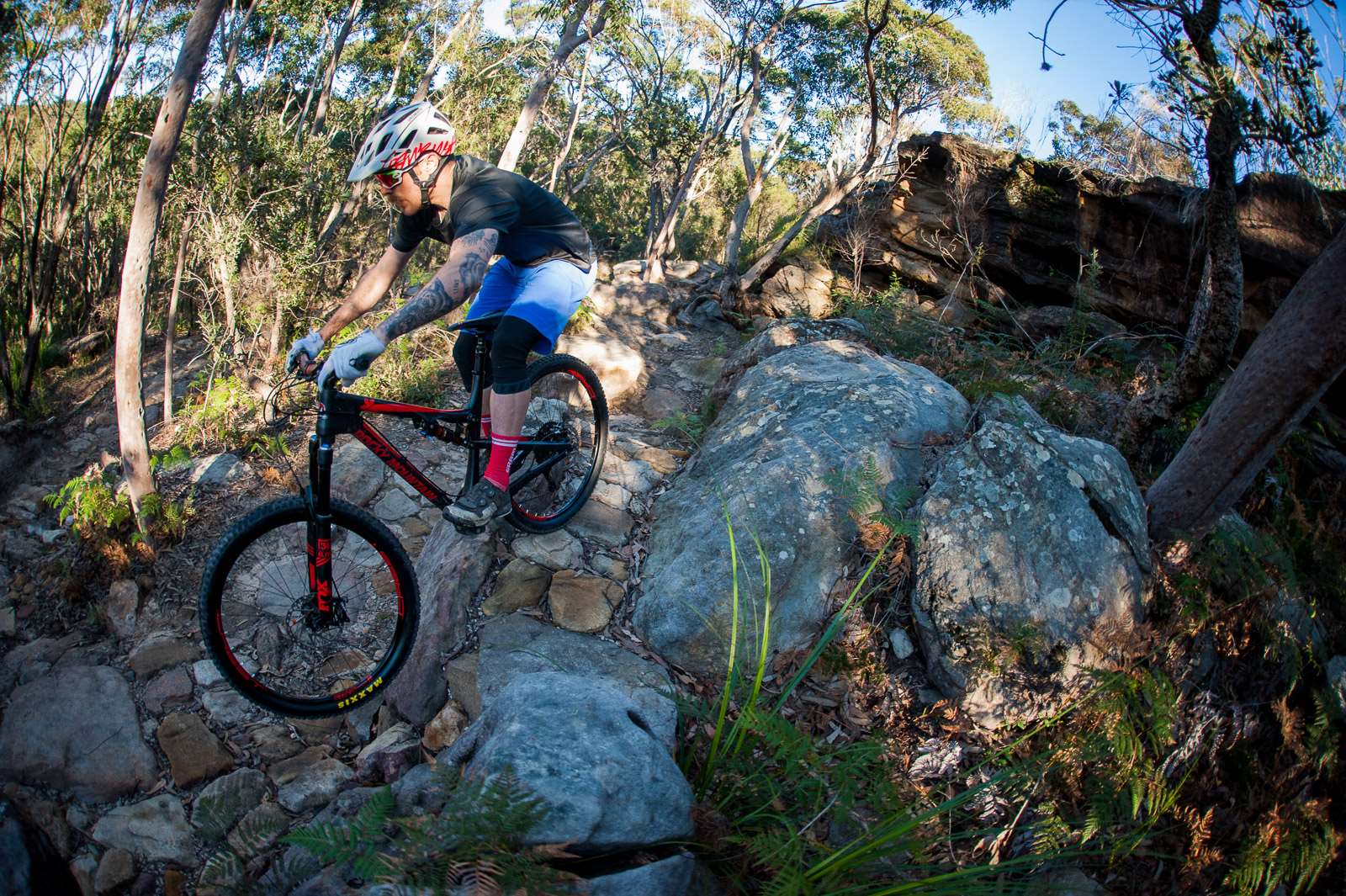
The tight, twisty and at times awkward trails of Sydney are slayed by this trail beast, the bottom bracket is low enough and with 422mm chain stays it can handle the tightest of corners. The stiffness of Boost keeps the wheels from flexing when you put the short rear end where you want it so you can really push into corners and not fear the bike is going to be all over the shop. I usually ride pretty similar trails at the start of using test bikes as it shows me what the bike is capable of, can it take that inside line? Or does it need to be coaxed through? Can it take a G-out or should I ride around? It’s a good test for me as I usually ride a 160mm 29er which can handle almost all types of riding. What surprised me with the Rocky was that I was taking lines that my large enduro bike could take, not large drops but inside lines on corners, small gaps into corners and taking main lines in rock gardens. I’m not trying to say that you should go out and sell your 140mm+ trail bike and replace it with this, but what I am saying is that the Thunderbolt is capable well above its 120mm title. Paired with the dropper post it really makes this bike do more than its travel would suggest. The capabilities of this bike I put down to three things: stiffness, the suspension tuning, and the geometry.
Lets start with the stiffness. Running a 34mm fork on the front end is synonymous with being “stiffer” but why is this good? The main reason is deflection from front end hits and the reason this is good is that it allows the suspension to work properly. As a fork flexes back and forth it adds stiction to the bushings of the fork making it a little harsher, it also moves where your wheels are. The stiffness of the front is the same with the rear, you will notice the wide carbon bulge where the shock mounts as you look at the top tube. This also limits flex. Having a bike that is stiffer allows the suspension to work as intended and this bike is stiff, so you can really put the Thunderbolt through its paces. A few key areas of parts on the bike also help. The bottom bracket uses the BB90 RaceFace crankset, offering a super stiff spindle that limits flex when pedalling. The cockpit is no different, with 35mm handlebars and stem allowing the bike to be solid and letting the suspension do its thing.
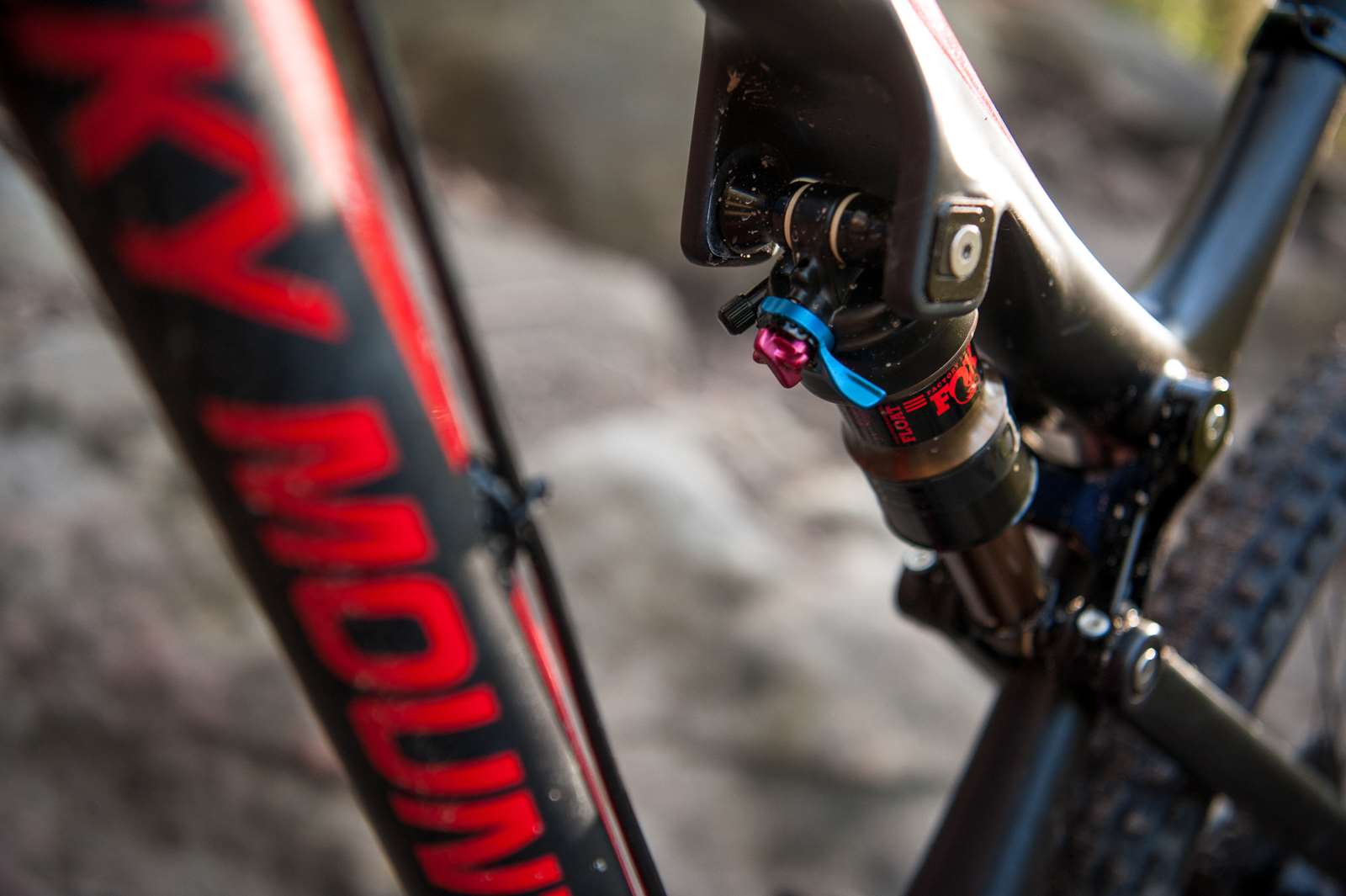
Suspension tuning of this bike is, as the Instgrammers say, ‘on-point’. Although every brand would love us to believe that their trail bike is going to climb like a hardtail and slay downhills like a downhill bike, there are always compromises. The clever chaps at Rocky Mountain have used a suspension design that restricts pedal bob really well, and the Float 34 fork with the FIT4 cartridge allows the front end to sit higher in the travel and resist diving. The Fox Evol air can is a higher capacity air chamber used to give any bike a more bottomless feel. Although I was always using full travel, the feedback just isn’t as harsh.
And geometry – while the numbers are really good, they’re actually really fluid with the RIDE-9 system. Basically you can move a chip that locates the forward shock mount up, down, forward, back, in the middle, and partway between the previous positions for 9 different locations. Move it forward, the bike is slacker, with more progressive suspension and a lower bottom bracket height, perfect for hard trail riding. Move it back and the bike is steeper and taller – with linear suspension. Great for a day of pedalling. Move it down, and the bike needs less air pressure to work – which eases the load on the shock. Not only is it great for bigger riders, but handy if you’re packing up for some overnight adventures. Move it up, and you need to increase the air pressure, which is a way to get the suspension to work for lighter riders without a custom shock tune. These aren’t quite changes you make trail side, but you can really tune your bike for how you want it to ride.
Translates these three features to the trail and it delivers a bike that can take a hit. The bike is light and flickable around the trail, in-part again to the suspension, but also the lightweight build. The linkage of the bike gives a playful mid-stroke and the Thunderbolt doesn’t seem to have a lull in its travel at this point. You are able to pump the bike more and more, although you are not hitting sections like on a 140mm+ travel bike you can build speed through obstacles and get back to speed after cornering. One problem I did find in the rough sections is that the bike is quite loud, this is due to a lack of chain-stay protection, not something hard to fix but something I would have liked to be included on the bike.
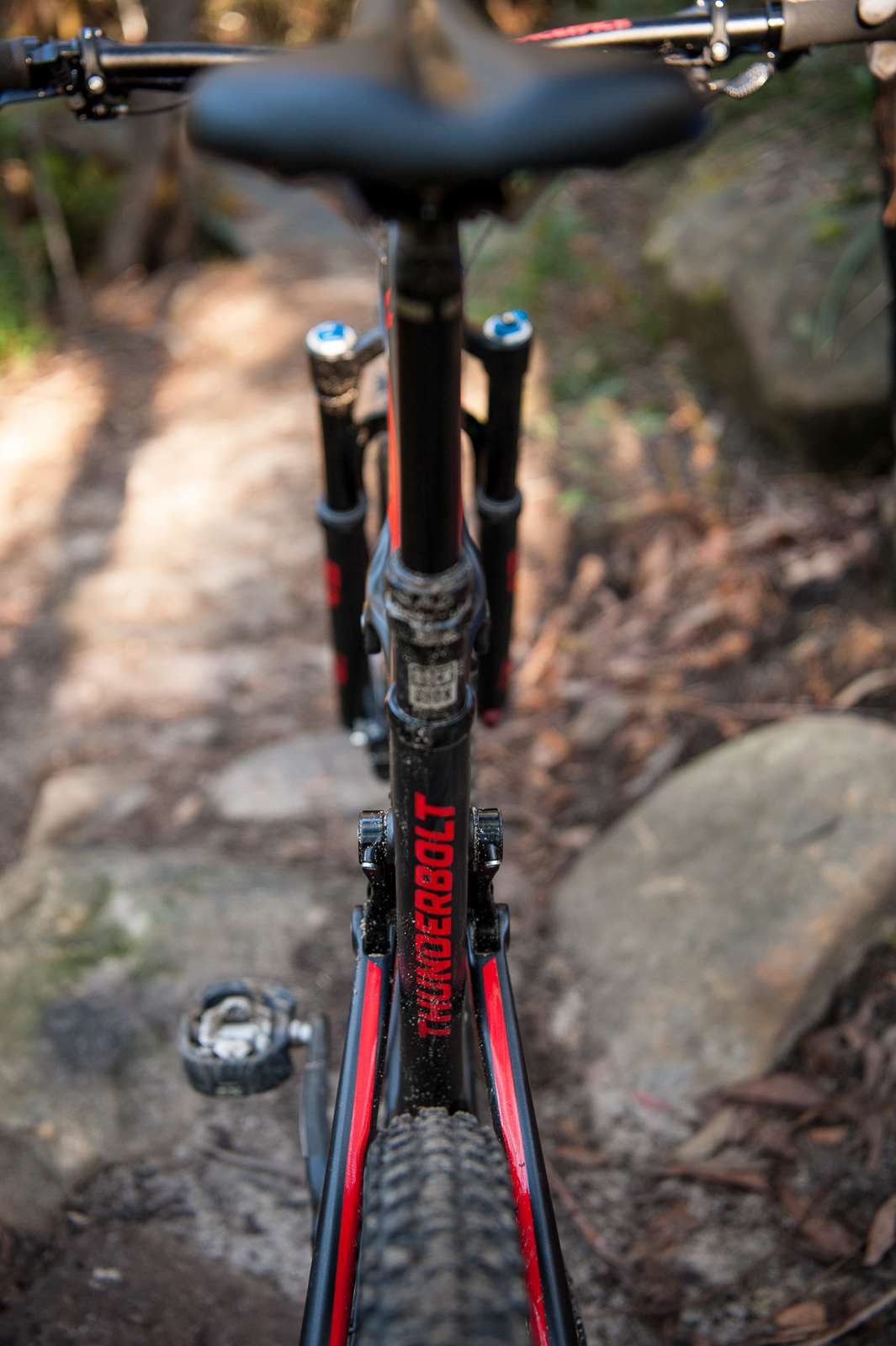
Final thoughts
Rocky Mountain have decided to make something that they wanted to ride. A 120mm travel bike that has a gravity heart. This bike isn’t going to replace your enduro bike but it is a really fun bike for most trails in Australia. It is playful in corners and light enough on climbs. With smart suspension and adjustable geometry, the Thunderbolt rides brilliantly and the burly build is going to give you more than just durable parts, it is going to deliver a bike that can be pushed on the trail.
| BRAND | Rocky Mountain |
| MODEL | Thunderbolt 770 MSL |
| RRP | $7299 |
| WEIGHT | 11.9KG |
| FROM | adventurebrands.com.au |
| SIZES | S,M (tested), L, XL |
| FORK | Fox Float 34 Performance Elite 130mm |
| SHOCK | Fox Float Evol Factory 120mm |
| BRAKES | Shimano XT M8000 180mm |
| CASSETTE | Shimano XT 11-46 |
| SHIFTER | Shimano XT M8000 11sp |
| DERAILIEUR | Shimano XT M8000 |
| CRANKS | Race Face Turbine 32t cinch ring |
| RIMS | Stan's No Tubes Crest MK 3 |
| HUBS | Shimano M8000 Boost |
| TYRES |
Maxxis DHR ll / Crossmark ll |
| HANDLEBARS | Race Face Turbine 760mm |
| STEM | Rocky Mountain 35 AM |
| SEATPOST | Rockshox Reverb 30.9 |
| SADDLE | WTB Silverado Race SL |

